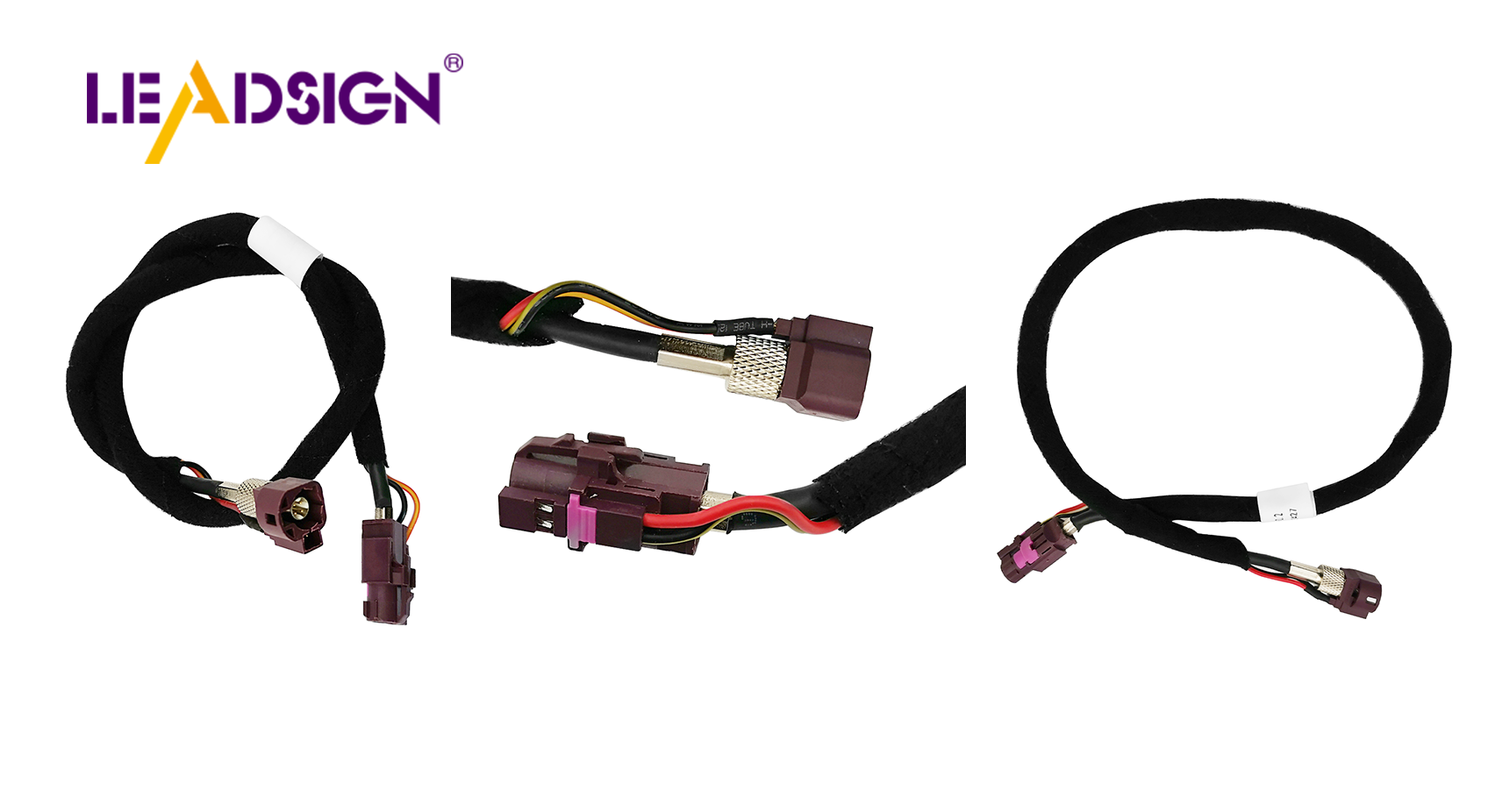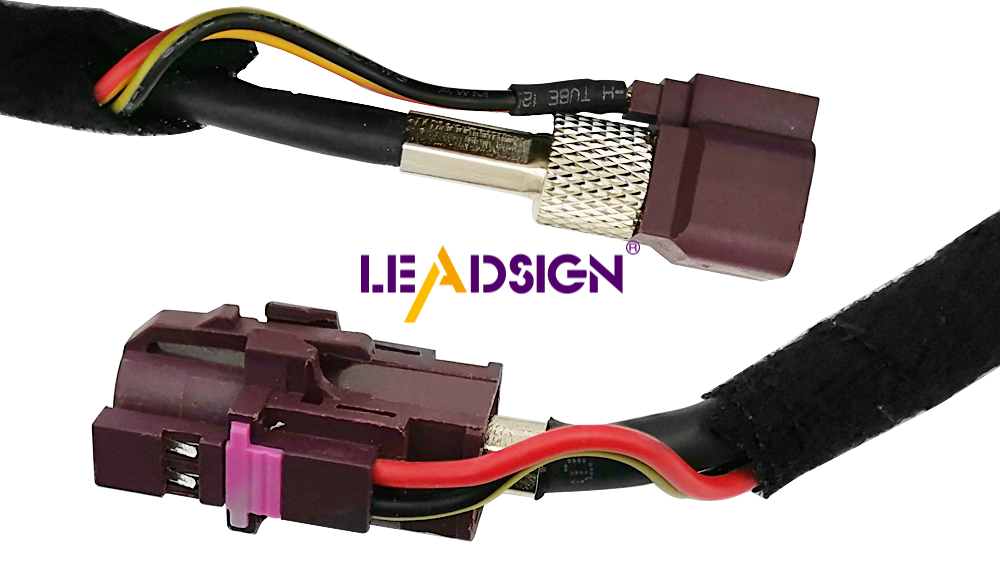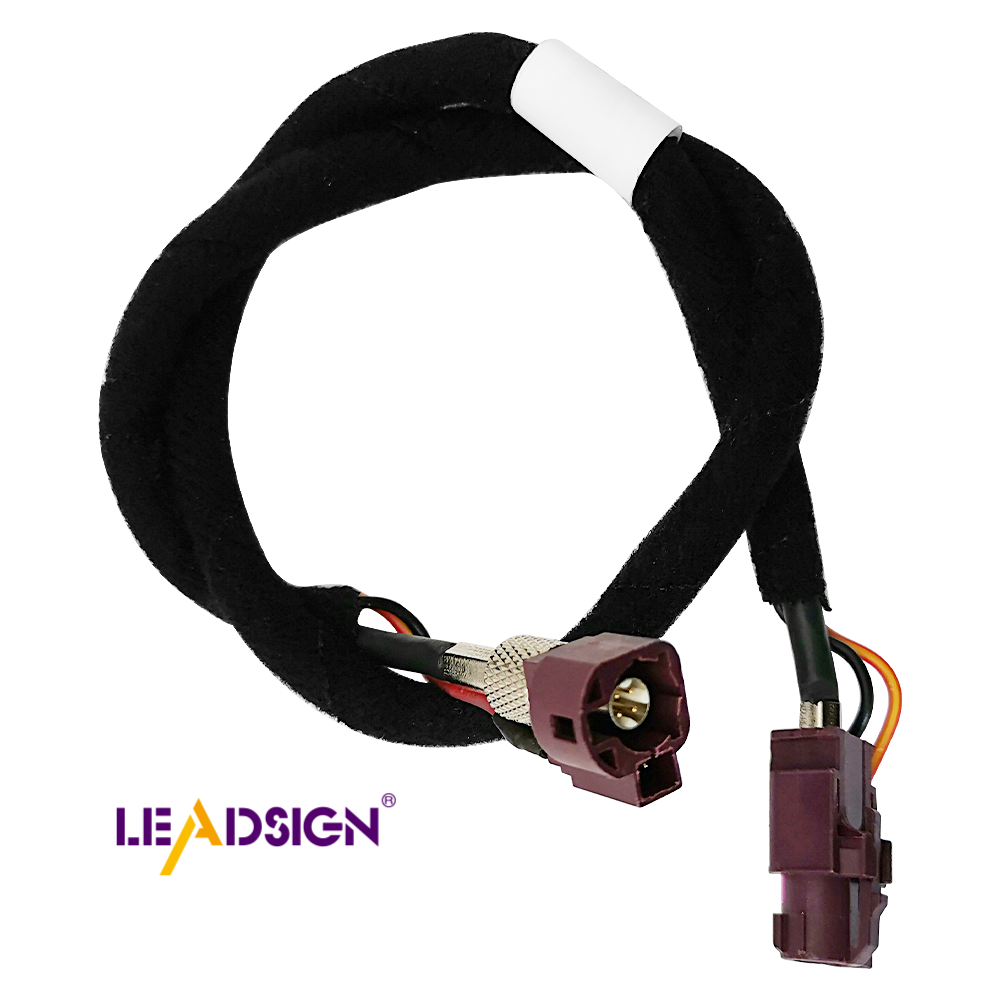Learn to Crimp and Solder Automotive Networking Wires

In cars, strong wire connections are very important for good performance. Bad wiring can cause problems like noise, failures, or breakdowns. Learning about different auto wire connector types, as well as crimping and soldering, helps make strong and lasting connections. These connections resist things like water and dirt. Crimping is fast and makes tight seals, while soldering creates strong bonds when done right. Knowing these methods and picking the right auto wire connector types improves your skills. This is helpful whether you fix cars for fun or as a job.
Key Takeaways
Crimping and soldering are essential techniques for creating strong, reliable wire connections in automotive applications.
Choose the right auto wire connectors based on their specific uses, such as HSD connectors for fast data transfer or butt connectors for repairs.
Proper preparation of wires, including stripping and twisting strands, is crucial for successful crimping and soldering.
Using the correct tools, like crimping tools and soldering irons, ensures tight and lasting connections.
Always test your connections with a pull test and a multimeter to confirm their strength and functionality.
Avoid common mistakes such as using the wrong tools or overheating wires, which can lead to weak connections.
Practice regularly with spare wires to build confidence and improve your crimping and soldering skills.
Overview of Crimping and Soldering
Crimping and soldering are key ways to make strong wire connections. Each method has its own uses, making them useful for car wiring.
What is Crimping?
Crimping means squeezing a connector onto a wire with a special tool. This makes a strong bond that carries electricity well and lasts long. First, strip the wire to show the metal strands. Then, put it in the connector and press with the crimping tool.
Crimping is popular in car wiring because it’s quick and works well. It holds up against water, dirt, and shaking. Using good tools and preparing wires right is important for success. For example, wire crimping tools help make every connection even and steady.
"Crimping is simple, fast, and reliable for car wiring jobs."
What is Soldering?
Soldering joins wires by melting solder, which is a metal mix. Heat both the wire and solder to stick them together firmly. Clean the wire first and remove its covering for better results.
Soldering works best when you need a lasting connection that conducts electricity well. It’s often used when crimping isn’t enough alone. But soldering takes more time and care than crimping does. Be careful not to overheat wires or damage their covering.
Auto Wire Connector Types and Their Applications
Picking the right auto connectors helps make good connections. Different connectors work for different tasks based on size or use:
HSD Connectors: These send data fast in cars like cameras or USBs.
Butt Connectors: These join two wires end-to-end during repairs.
Ring Terminals: These attach wires to bolts or studs for grounding.
Spade Terminals: These connect easily to parts like switches quickly.
Heat-Shrink Connectors: These protect from water or rust in tough spots.
Each type has its strengths, so knowing their uses helps pick wisely. For instance, HSD connectors hold cables tightly while sending data fast in modern cars.
Learning crimping, soldering, and choosing proper connectors ensures safe car wiring projects!
Tools and Materials for Crimping and Soldering

Having the right tools is very important. Good tools make strong wire connections that last. Below are the main tools needed and tips for picking auto wire connectors.
Important Tools for Crimping
Crimping needs careful work and the correct tools. Here are some key items:
Crimping Tools: These press wires into connectors tightly. The SolderStick Wire Crimping Tool is useful with its changeable parts. It works well with many connector types.
Automotive Wire Strippers: These remove the plastic cover on wires. This step shows enough bare wire to fit into a crimp terminal.
Heat-Shrink Tubing: After crimping, this covers the connection to keep it safe from water or dirt.
"Crimping makes quick, strong connections that handle tough conditions."
Do not press too hard or too soft when using crimpers. Using them correctly keeps your connection strong.
Important Tools for Soldering
Soldering uses different tools to join wires securely. You’ll need these:
Soldering Iron: This tool heats up solder and wires to stick them together.
Solder Wire: This metal melts to connect wires firmly.
Helping Hand: This holds your wires still while you work, making things easier.
Wire Cutters: Use these to trim extra wire after soldering.
Use these tools properly for neat soldered joints. Always work in a place with fresh air to avoid breathing harmful fumes.
Picking the Right Auto Wire Connectors
Choosing good connectors is important for solid wiring jobs. Different connectors do different tasks:
HSD Connectors: Best for sending data fast in car systems like cameras.
Butt Connectors: Join two wires end-to-end during repairs.
Ring Terminals: Attach wires to bolts or studs safely.
Spade Terminals: Quickly connect switches or other parts easily.
Heat-Shrink Connectors: Protect against water and rust in harsh areas.
Pick connectors based on their use and wire size. For example, modern cars often need fast data transfer, so use HSD connectors.
Using proper tools and picking good connectors makes car wiring safe and long-lasting!
Step-by-Step Guide to Crimping Automotive Wires

Crimping car wires needs care and the right steps. Follow these instructions to make strong wire connections.
Getting the Wire Ready
Prepare the wire first for a good crimp.
Take Off the Cover: Use a good wire stripper to remove the plastic cover. Show about 1/4 to 1/2 inch of metal strands, based on connector size.
Check the Strands: Look at the exposed strands for any damage or breaks. Broken strands can make weak connections.
Twist Them Together: Twist the bare strands gently so they stay together. This helps when putting them into connectors.
"Getting wires ready makes crimping easier and better."
Adding and Crimping Connectors
After preparing, attach and crimp your connector.
Pick a Connector: Choose one that fits your wire size and job needs. For example, use HSD connectors for fast data transfer in cars.
Put in the Wire: Push stripped wire into the connector until it touches metal inside.
Use Right Tools: Select a tool made for your connector type. Ratchet tools give steady pressure and prevent mistakes.
Crimp It Tight: Place connector in tool jaws, then squeeze handles hard enough to secure it well.
"Good tools help make tight, lasting connections."
Checking Your Work
Test your crimped connection to ensure it's strong and works well.
Pull Test It: Tug gently on the wire; it shouldn’t come loose if done right.
Look Closely at Crimp: Check if it’s even with no gaps or loose spots.
Test with Multimeter: Use this tool to check if electricity flows properly through it.
"Testing ensures safe, working connections every time."
By following these easy steps, you’ll create professional-quality wiring for cars!
Step-by-Step Guide to Soldering Automotive Wires
Soldering car wires needs care and focus. Follow these steps to make strong, lasting connections.
Getting the Wire and Connector Ready
Good preparation helps make a solid solder joint. Do this first:
Take Off Insulation: Use a wire stripper to remove 1/4 inch of covering. Make sure the bare strands are clean and not broken.
Twist Strands Together: Twist the bare strands tightly to stop them from fraying.
Clean the Connector: Wipe the connector surface to remove dirt or rust. A clean part helps solder stick better.
Hold Everything Steady: Use clamps or a helping hand tool to keep parts still while working.
"Preparing well makes soldering easier and stronger."
Making the Solder Joint
Soldering takes steady hands and proper steps. Here’s how:
Heat Up Solder Iron: Turn on your iron until it gets hot enough to melt solder quickly.
Warm Wire and Connector: Touch the iron tip to both parts for a few seconds before adding solder.
Add Solder Carefully: Press solder wire against the heated area, not directly on the iron tip, so it melts smoothly into place.
Let It Cool Down: Remove heat once covered fully, then let it cool without moving anything.
"A good joint looks shiny and smooth for strong connections."
Protecting Your Work
After finishing, secure your joint properly:
Check Your Work: Look for cracks or gaps in soldered areas; they should be solid.
Use Heat-Shrink Tubing: Cover joints with tubing and shrink using heat for protection from water or dirt.
Test Connection Strength: Use a multimeter tool to check if electricity flows correctly through your work.
"Protecting joints keeps them safe from damage over time."
Practice often to get better at making great car wiring connections!
Tips for Quality and Avoiding Mistakes
Making good car wire connections needs focus and the right steps. By skipping errors, using smart methods, and staying safe, you can make strong and lasting results.
Common Mistakes to Avoid
Mistakes in crimping or soldering can cause weak wires. Stay away from these issues to do better work:
Using the Wrong Tools: Always pick tools made for crimping or soldering jobs. Regular tools might not give tight or secure connections.
Improper Wire Stripping: Removing too much or too little cover weakens wires. Strip just enough so the wire fits well into connectors.
Overheating During Soldering: Too much heat harms wire covers or connectors. Heat only until the solder sticks properly.
Skipping the Pull Test: Not testing your work may leave loose wires that fail later.
Choosing the Wrong Connector: Pick a connector that matches your wire size and job type. For example, correct auto wire connector types ensure better results.
"Bad connections often cause problems like vibration, shock, or rust." – Electrical Connections Expert
Best Practices for Reliable Connections
Good habits help keep your wiring strong over time. Follow these tips to get great results:
Prepare Thoroughly: Clean both wires and connectors before starting work. Dirt stops proper bonding.
Match the Connector to the Job: Use connectors based on wire size and purpose. For instance, HSD connectors are best for fast data in cars.
Use Heat-Shrink Tubing: After finishing, cover joints with tubing to block water damage.
Work in a Stable Environment: Hold wires steady with clamps while soldering for fewer mistakes.
Inspect and Test: Check your connection for gaps or uneven spots after finishing it.
"Strong crimp or solder joints matter most." – Electrical Connections Expert
Safety Tips
Safety is key when working on car wiring projects! Protect yourself by following these rules:
Wear Protective Gear: Use goggles to protect eyes from sparks; gloves help avoid burns.
Work in a Ventilated Area: Solder fumes are harmful; always have fresh air around you.
Handle Tools Carefully: Keep hot tools away from flammable things; turn them off when done.
Avoid Overloading Circuits: Make sure wires handle their power load safely without overheating.
Stay Focused: Work in quiet spaces without distractions to avoid mistakes.
"Protect joints well so they last longer." – Electrical Connections Expert
By avoiding errors, using smart steps, and staying safe, you’ll make strong car wiring connections that last long! These tips will help improve your skills while keeping projects reliable over time.
Learning to crimp and solder is important for strong car wiring. These skills help make your work last longer and perform well. To do it right, follow steps like getting wires ready, using good tools, and checking your work. Have tools like crimpers, soldering irons, and heat-shrink tubing handy.
"It’s easy to learn if you practice and stay patient."
Practice often to get better at these skills. Use extra wires first to feel more confident. With effort, you can make neat, professional connections and feel proud of your work. Keep improving with every project!
See Also
Enhancing Vehicle Data Transfer With Superior Connectors And Cables
Understanding HSD Connectors Within The Automotive Sector
Discovering The Advantages Of Fakra Connectors For Vehicles
Transforming Vehicle Connectivity With The Benefits Of HFM Connectors
Maximizing Efficiency With High-Speed FAKRA-Mini Connectors In Automotive

